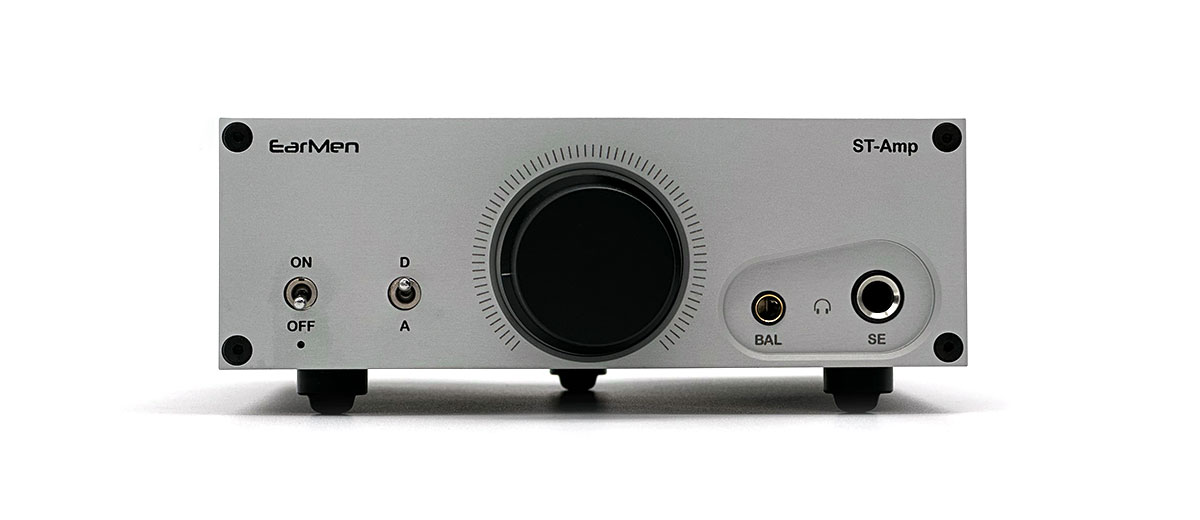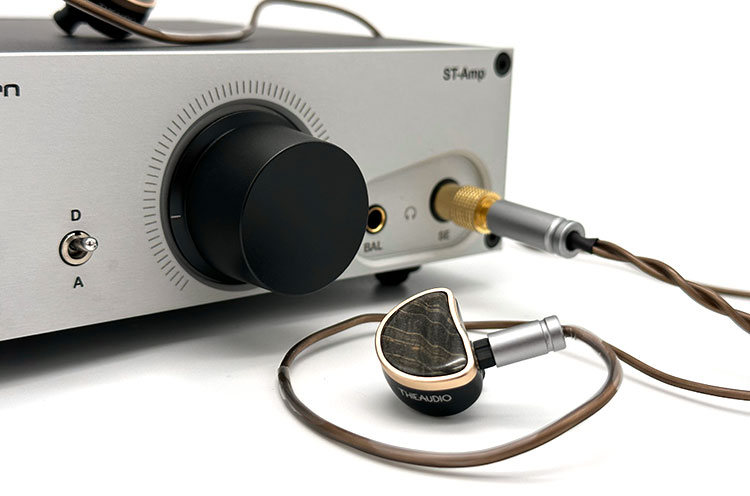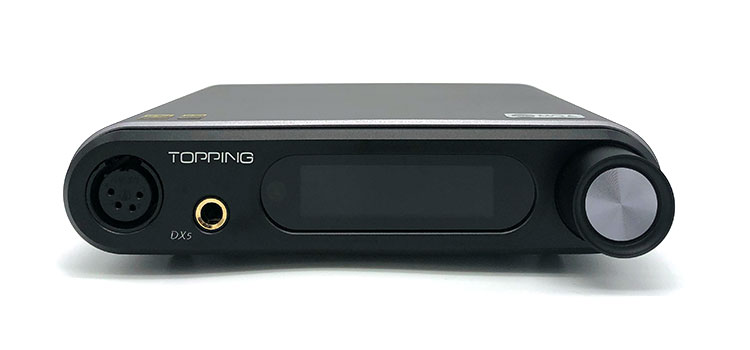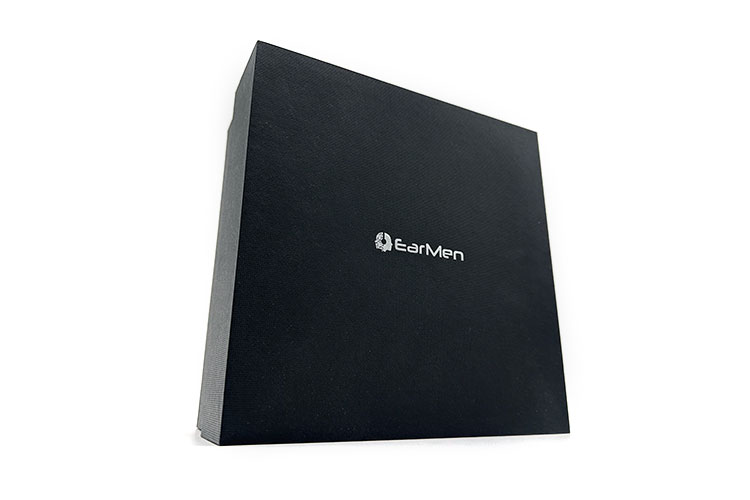Synergy
Power
Mind that there is no gain in the ST-Amp which consequently means that if your headphone is maxing out the analog volume wheel, then you might need to check out other options.
It is important to consider as well if you have sensitive gears such as IEMs that there is a slight channel imbalance until the second marking of the volume.
Fans of planar magnetics may reason that the amplifier section could use more juice, but it wasn’t the case when it powered my Dan Clark Ether 2 to pleasing levels.
With dynamic sets as well like the Audio-Technica ATH-ADX5000, the ST-Amp is making light work moving the headphone’s 420Ω drivers loud at just around the noon position of the wheel.
Swapping to the Thieaudio Elixir IEM, since I went past the channel imbalance zone to the fifth mark, the ST-Amp promised to become a nice partner as well for portable gears. Just be wary to not set the volume too low to not affect the overall experience.
Pairings
I left testing the pre-out to the pairing segment since I realized it seemed a bit redundant to listen to the DAC alone when I’m essentially doing the same by plugging an external DAC into the ST-Amp.
So here I connected the ST-Amp to another EarMen product, the CH-Amp, and verified that while it does offer a livelier listen to the default signature, its dynamics, and detail isn’t too convincing.
The other way around, the SMSL SU-10 DAC has let the ST-Amp sing to its full potential. It took the ST-Amp into a U-turn and polished on the criticisms it received in the DAC/Amp section improving layering, dispersion, and definition to name a few.
Nevertheless, headphones the likes of the ATH-ADX5000 enjoyed the company of the ST-Amp where the punchy and not too shouty technicalities of the amplifier complemented the neutral to bright leaning drivers.
Putting the Sennheiser HD600 on as well which is a quintessential pair that a lot of you may have owned or heard shined with the ST-Amp.
Guitars in the HD600 twanged with amiable lightness and voices were allowed to get some breathing space by adding some forward depth. It also lets far objects escape into a less exacting capacity than the ATH-ADX5000.
A pleasant discovery is the nice complement of the Elixir with the flavor of the ST-Amp which blends into a richer profile. The IEM works with the strengths of the ST-Amp, accentuating the reverb and creating a more casual sound where a bulkier bass and bigger instruments are presented.
Select Comparisons
Topping DX5
Technical
The Topping DX5 may be the cheaper one but Topping was able to bring their entry down to a lower 0.00009% THD+N. This is coming from the proprietary NFCA module of Topping which harvests the signal of the two ES9068AS inside.
Continuing with the bells and whistles, the DX5 has a wider array of inputs which offers compatibility with MQA full decode. But, crucially missing in the list here is where the ST-Amp gets its edge, the ability to be a dedicated amplifier.
For those unaware, the front XLR connection of the DX5 is single-ended and simply mirrors the signal of the 6.35mm jack. EarMen on the other hand won’t let its 4.4mm connectors be wasted and has designed it to output up to 1.85W of a properly balanced signal.
Design
With two design awards in its bag, the DX5 goes to be trendier than the ST-Amp. A departure from the tired industrial design of Topping, the DX5 incorporates a more holistic approach that involves the whole chassis in its design.
But I like the ST-Amp even if it leaves the rest of the body bare since in its simplicity, it develops a facade that is easier to acclimate to. Also, once you turn on the DX5, the seven-segment display does take away some interest since it separates it from higher-end components that are fitted with a proper LCD.
The volume of the DX5 is digitally controlled so the wheel in the right corner doesn’t need a potentiometer which in effect removes any channel imbalance. This allows Topping to turn the knob into a multifunctional controller for accessing the settings so it doesn’t need the toggle switches of the ST-Amp anymore.
Performance
Known for their clinical and honest audio gears, Topping’s new DX5 isn’t too far away from this target in being the drier and more straight-cut sounding device. It lacks any of the extra flare the stamp has and waters down the richness for a more honest sound.
While it is a matter of taste, the ST-Amp is better suited for those who don’t need the impressive numbers and simply want a well-tuned device that also has more character and subtleties.
Even if the ST-Amp is not afraid to add some muscle to its tonality, it is still clearly the better one at retrieving detail in a sustained note. While not night and day, edges are more smoothed out, especially in quieter scenes on the camp of Topping.
Expectedly, the upper midrange of the DX5 is more animated. Some may want the lean sound of the vocals but for some females, the tendency is for it to be shriller.
Both have clear image separation but the ST-Amp even if it has a shorter soundstage has a more realistic impression with a room full of clapping audience. It does this without the need to turn the energy way up unlike the DX5 where it also gets wide but fades earlier.
Shanling EM5
Technical
The Shanling EM5 is an all-in-one streamer, DAC/Amp, and media player with a long list of digital and analog outputs.
The amount of connectivity the EM5 offers ranging from a simple optical input to a 5G WIFI receiver does open a wide gap against the ST-Amp in terms of flexibility but it still lacks an analog input to completely claim the win.
The EM5 is true to Shanling’s in-house engineering preferences with an AK4493EQ DAC with a higher level of DSD512 and PCM 32BIT/768kHz support.
The EM5 has a slightly lower 1.62W output power from its balanced headphone jacks on the same 32Ω load. However, switching it up, the ST-Amp marginally loses when using single-ended headphones since the EM5 goes up to a higher 0.54W on the same load.
Design
It is harder to keep out of sight since the EM5 is the bigger device of the two. For good reason though since it needs all the extra bulk to pack the additional streaming section inside and showcase the dizzyingly long list of IO in the rear.
With a considerably plainer chassis, either the gold knob or the 4.7-inch touch HD display embedded below a span of glass will likely be the ones to catch your attention. Living with it though, the fact that the display is on top can be quite cumbersome as I keep my gears to the side so the screen is hidden from view most of the time.
So, while the EM5 may be more feature-rich, the ST-Amp with its unsophisticated interface is more user-friendly in my opinion. Plus, a minor gripe that I have with the EM5 is that the volume wheel is a little stiff for a digital controller.
Performance
If you’re looking for more body and presence with drums and beats, the EM5 will be right up your alley. Similarly adept with lighter notes, the slightly roomier EM5 will continue to surpass the energy of the ST-Amp on more immense passages which make the latter seem polite in comparison.
Likewise, guitars on the EM5 have a warmer and more laid-back timbre. The ST-Amp however surprisingly edges the EM5 with clarity since the latter plays more smoothly while the former is capable of retrieving the subtleties of a vibrato more easily.
On shoutier segments, the EM5 is also surprisingly more shouty than the ST-Amp. Here though the more diffusive property of the EM5 makes it seem roomier.
Violins may be weaker on the ST-Amp but it enjoys a more natural timbre against the lean but easier-to-isolate feature of the same track on the EM5. Lastly, taller and more holographic, the EM5 improves the dynamics and presentation of the instruments of the ST-Amp.
Our Verdict
EarMen proved that they’re not here to play games even in the budget-friendly desktop category by introducing a simple but engaging platform with the ST-Amp for enthusiasts looking for the next upgrade step beyond the budget tier.
As a bundle, the sonic performance is more than sufficient to last users a while until they decide if any external equipment is necessary.
Don’t worry about the shadow cast by EarMen’s more heavy-weight desktop offerings to the ST-Amp. I did worry a bit that the tight budget could have dealt a blow to its sonic performance but it demonstrated that it can hold its own against popular all-in-ones alternatives in the market.
EarMen ST-Amp Technical Specifications
- DAC: ES9280
- Inputs: RCA SE, 4.4mm Balanced
- Outputs: 6.35mm SE, 4.4mm Balanced
- Pre-Outputs: RCA SE, 4.4mm Balanced.
- Audio Formats: up to 384kHz PCM, 64/128DoP
- Dimension: 170x20x150mm
- Weight: 1.1kg





